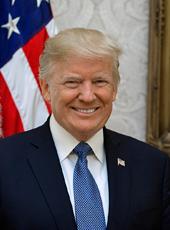
Press Release - President Donald J. Trump is Taking Action to Improve Access, Increase Choices, and Lower Costs for Healthcare
October 12, 2017
EXPANDING ACCESS TO MORE AFFORDABLE OPTIONS: President Donald J. Trump is taking action to increase the healthcare choices for millions of Americans, potentially allowing some employers to join together across State lines to offer coverage.
- President Trump signed an Executive Order to reform the United States healthcare system to take the first steps to expand choices and alternatives to Obamacare plans and increase competition to bring down costs for consumers.
- The order directs the Secretary of Labor to consider expanding access to Association Health Plans (AHPs), which could potentially allow American employers to form groups across State lines.
- A broader interpretation of the Employee Retirement Income Security Act (ERISA) could potentially allow employers in the same line of business anywhere in the country to join together to offer healthcare coverage to their employees.
- It could potentially allow employers to form AHPs through existing organizations, or create new ones for the express purpose of offering group insurance.
- By potentially making it easier for employers to band together, workers could have access to a broader range of insurance options at lower rates in the large group market.
- Employers participating in an AHP cannot exclude any employee from joining the plan and cannot develop premiums based on health conditions.
- A broader interpretation of the Employee Retirement Income Security Act (ERISA) could potentially allow employers in the same line of business anywhere in the country to join together to offer healthcare coverage to their employees.
- The order directs the Departments of the Treasury, Labor, and Health and Human Services to consider expanding coverage through low cost short-term limited duration insurance (STLDI).
- STLDI is not subject to costly Obamacare mandates and rules. One study found that on average STLDI costs one-third the price of the cheapest Obamacare plans.
- Despite its low cost, STLDI typically features broad provider networks and high coverage limits.
- The main groups who benefit from STLDI are people between jobs, people in counties with only a single insurer offering exchange plans, people with limited coverage networks, and people who missed the open enrollment period but still want insurance.
- The order directs the Departments of the Treasury, Labor, and Health and Human Services to consider changes to Health Reimbursement Arrangements (HRAs) so employers can make better use of them for their employees.
- HRAs are employer-funded accounts that reimburse employees for healthcare expenses, including deductibles and copayments.
- The IRS does not count funds contributed to an HRA as taxable income.
- Expanded HRAs could potentially give American workers greater flexibility and control over how to finance their healthcare needs.
OBAMACARE IS FAILING: The status quo is not delivering quality healthcare options for the American people, who are facing higher premiums and fewer options.
- The percentage of workers at small firms receiving coverage through their employer has declined from nearly half in 2010 to about one-third in 2017.
- In 2018, more than 1,500 counties (nearly 50 percent of all counties) are projected to have only one option on their individual insurance exchanges, according to the Centers for Medicare and Medicaid Services.
- This means 2.6 million Americans, or nearly 30 percent of exchange participants, will be left without a choice of insurers.
- From 2013 to 2017, average premiums for individual health insurance plans have doubled, increasing by $2,928 according to the Department of Health and Human Services.
- During this period, every State using www.healthcare.gov saw individual insurance premiums increase.
- Americans are departing the Obamacare exchanges and millions are choosing to pay the law's penalty instead.
- 500,000 fewer Americans enrolled in an Obamacare plan in 2017 compared to the prior year.
- Current exchange enrollment is 60% below what the Congressional Budget Office expected when the law took effect.
- 6.7 million Americans chose to pay the Obamacare penalty in 2015 rather than purchase insurance on the exchanges. 37% of penalized households made less than $25,000, and 79% of penalized households made less than $50,000.
Donald J. Trump (1st Term), Press Release - President Donald J. Trump is Taking Action to Improve Access, Increase Choices, and Lower Costs for Healthcare Online by Gerhard Peters and John T. Woolley, The American Presidency Project https://www.presidency.ucsb.edu/node/331679
